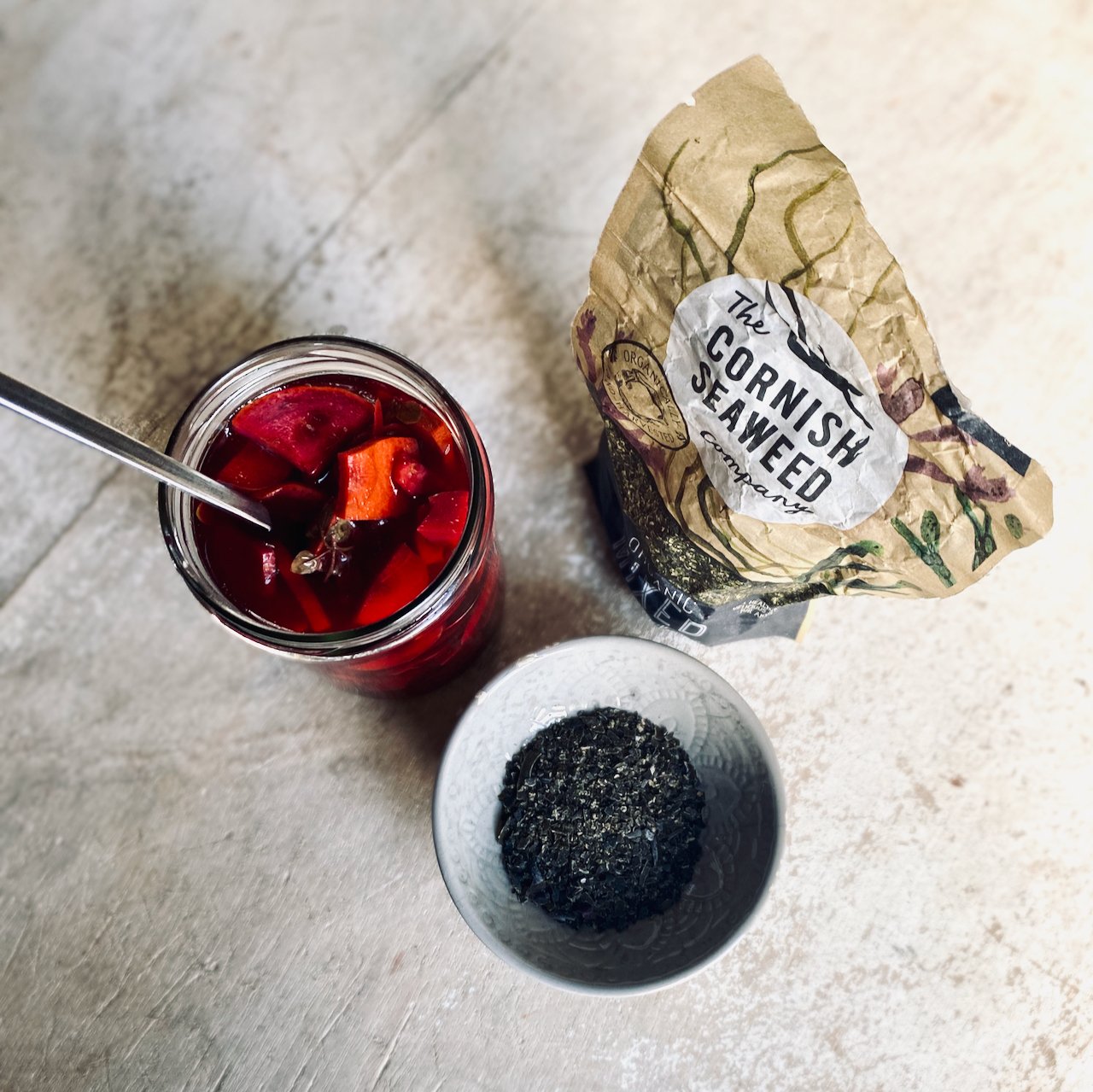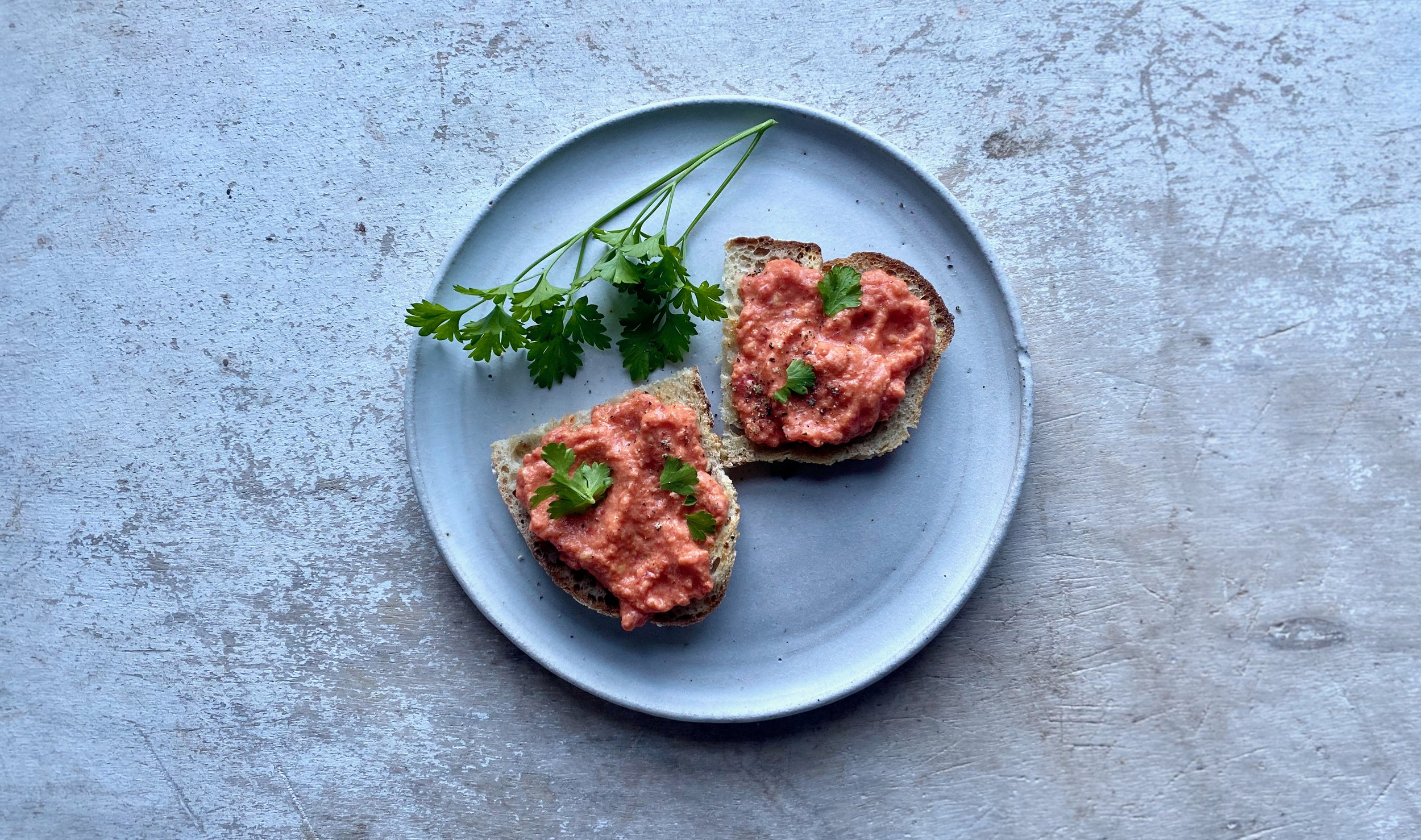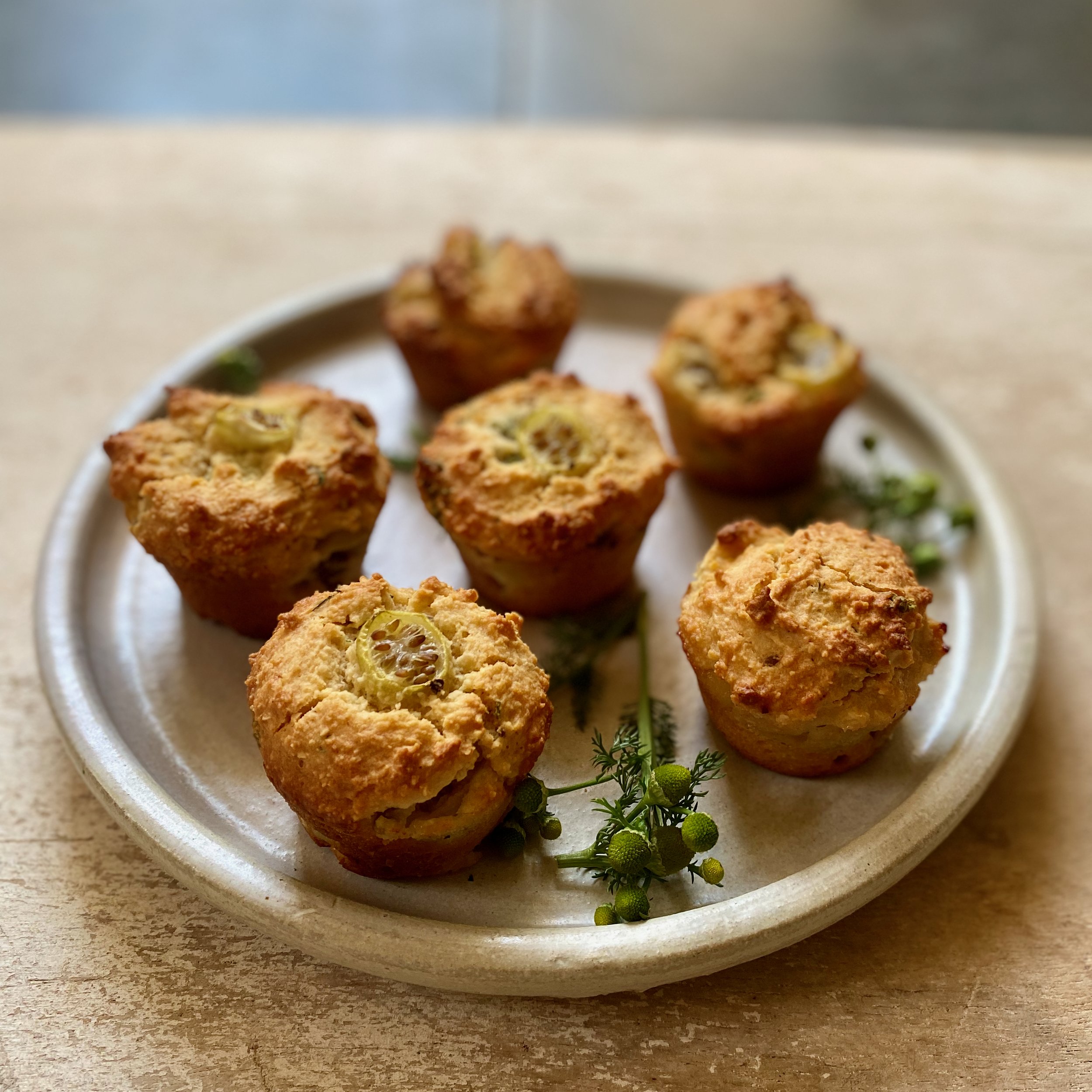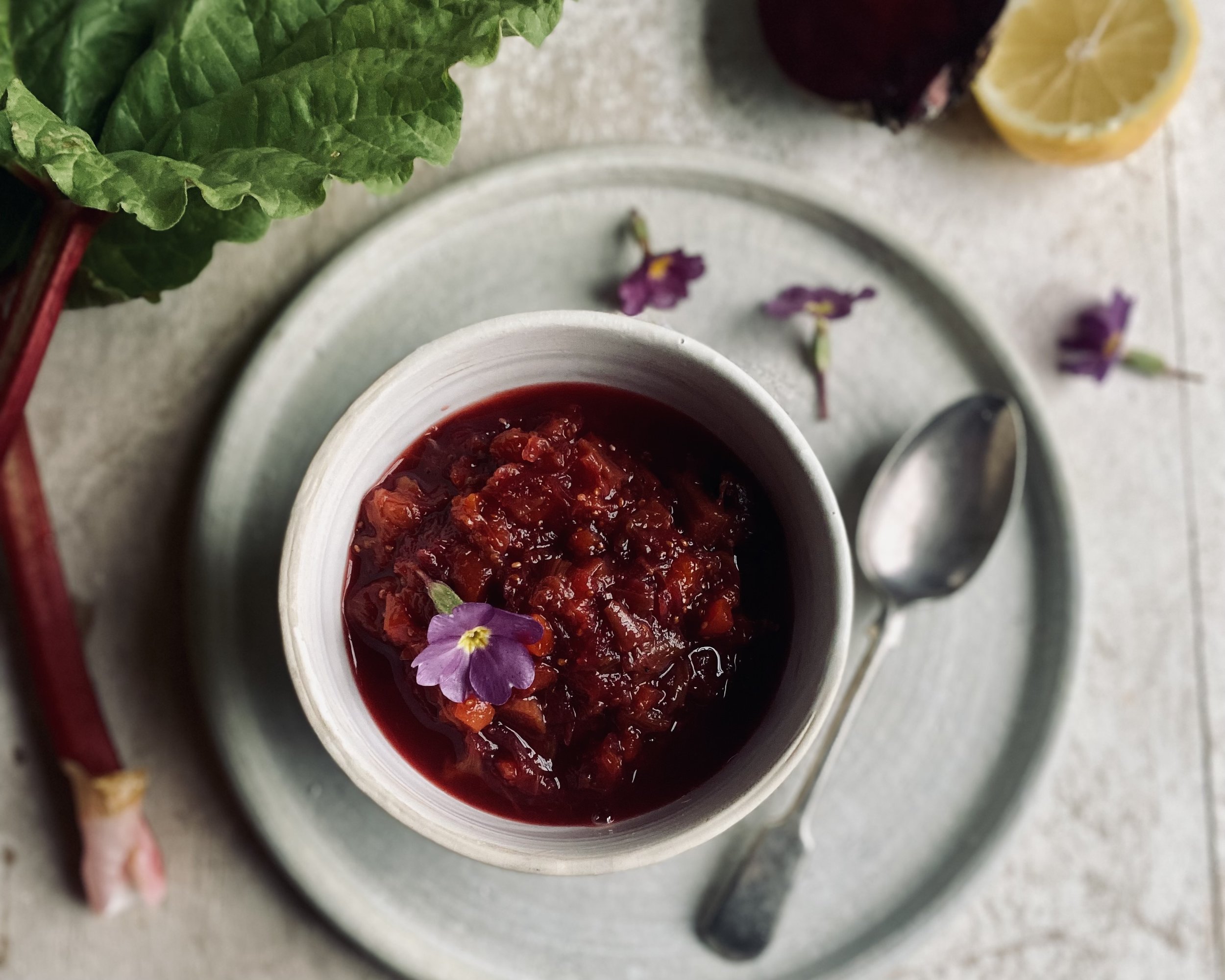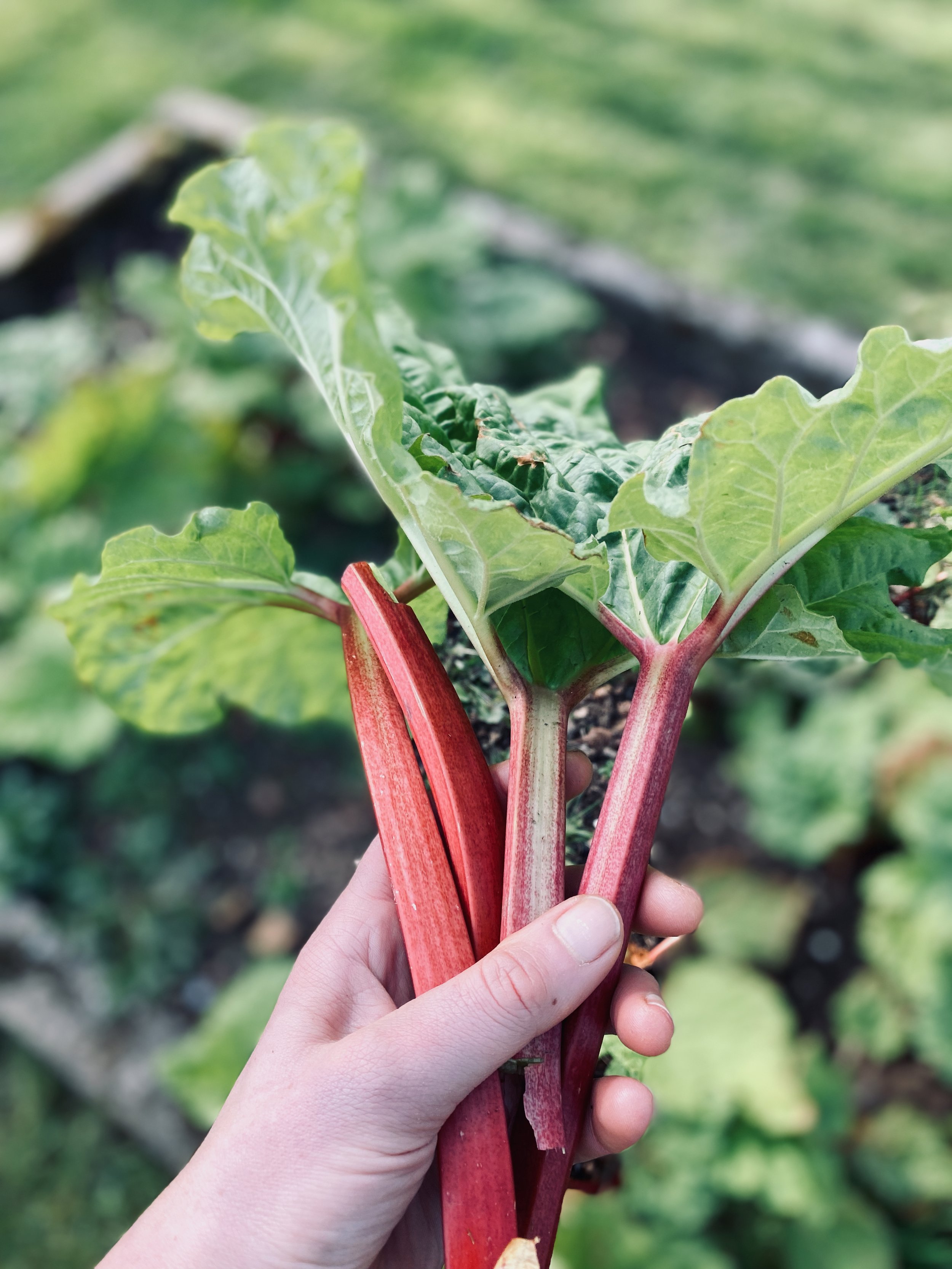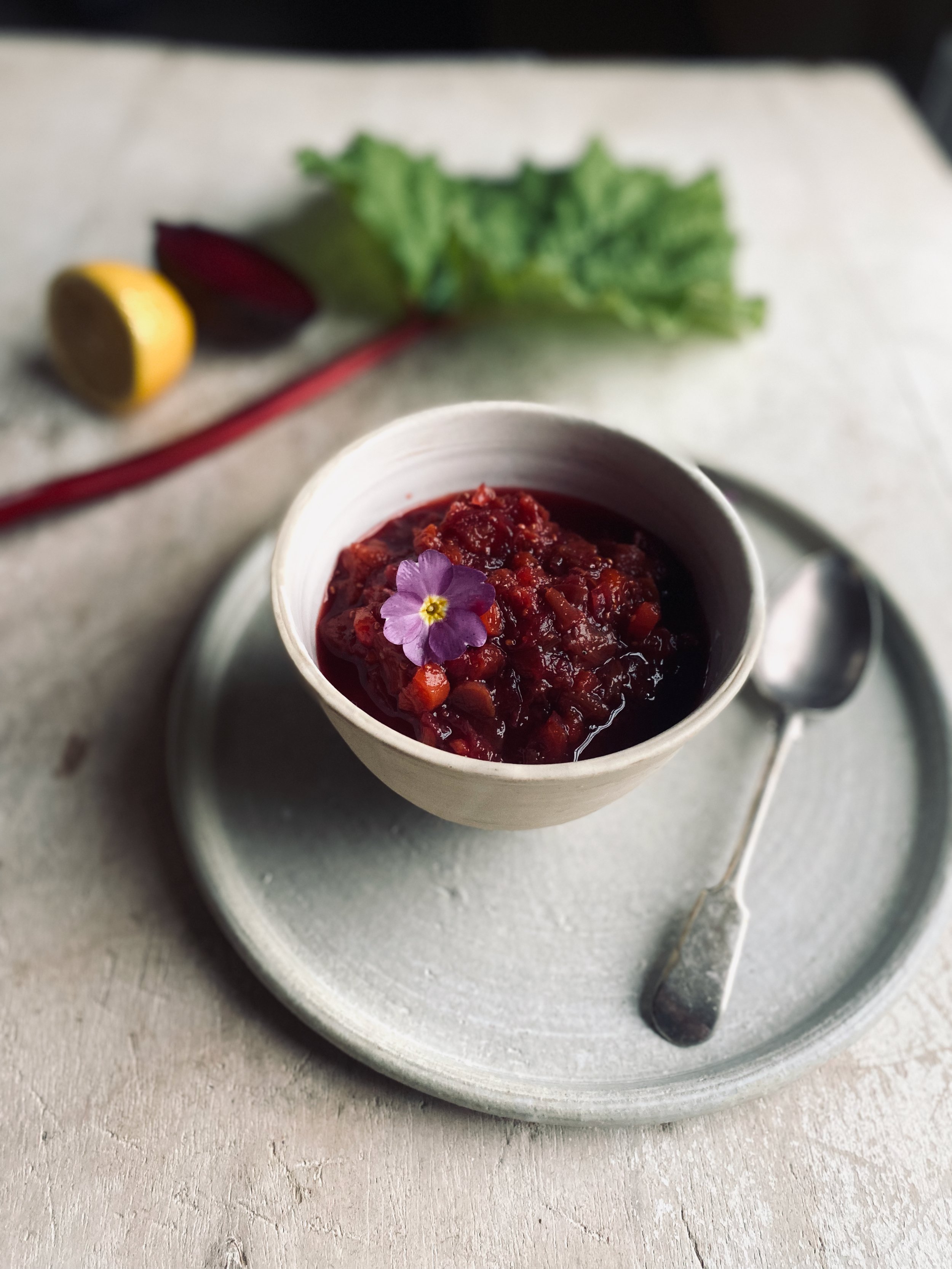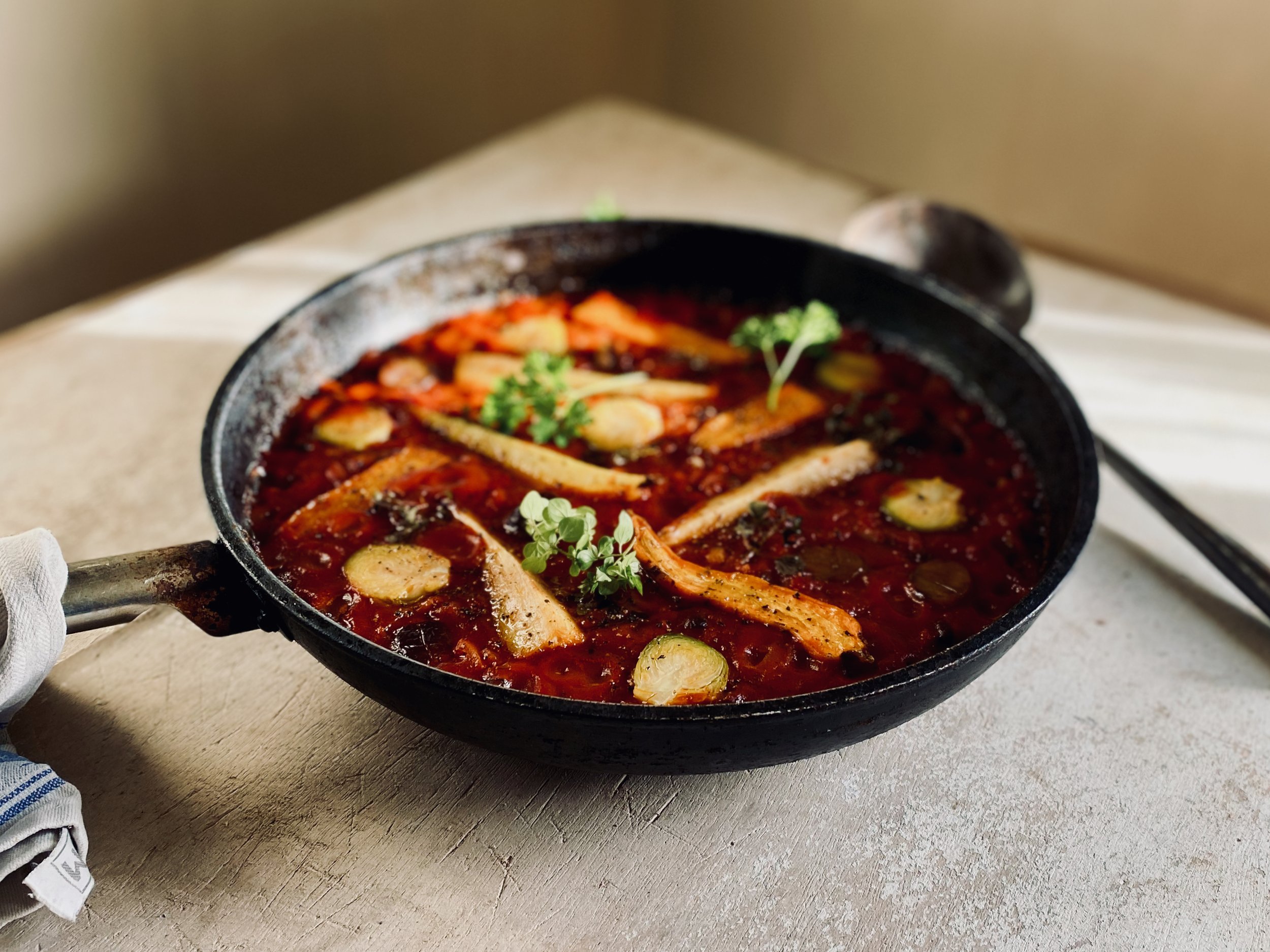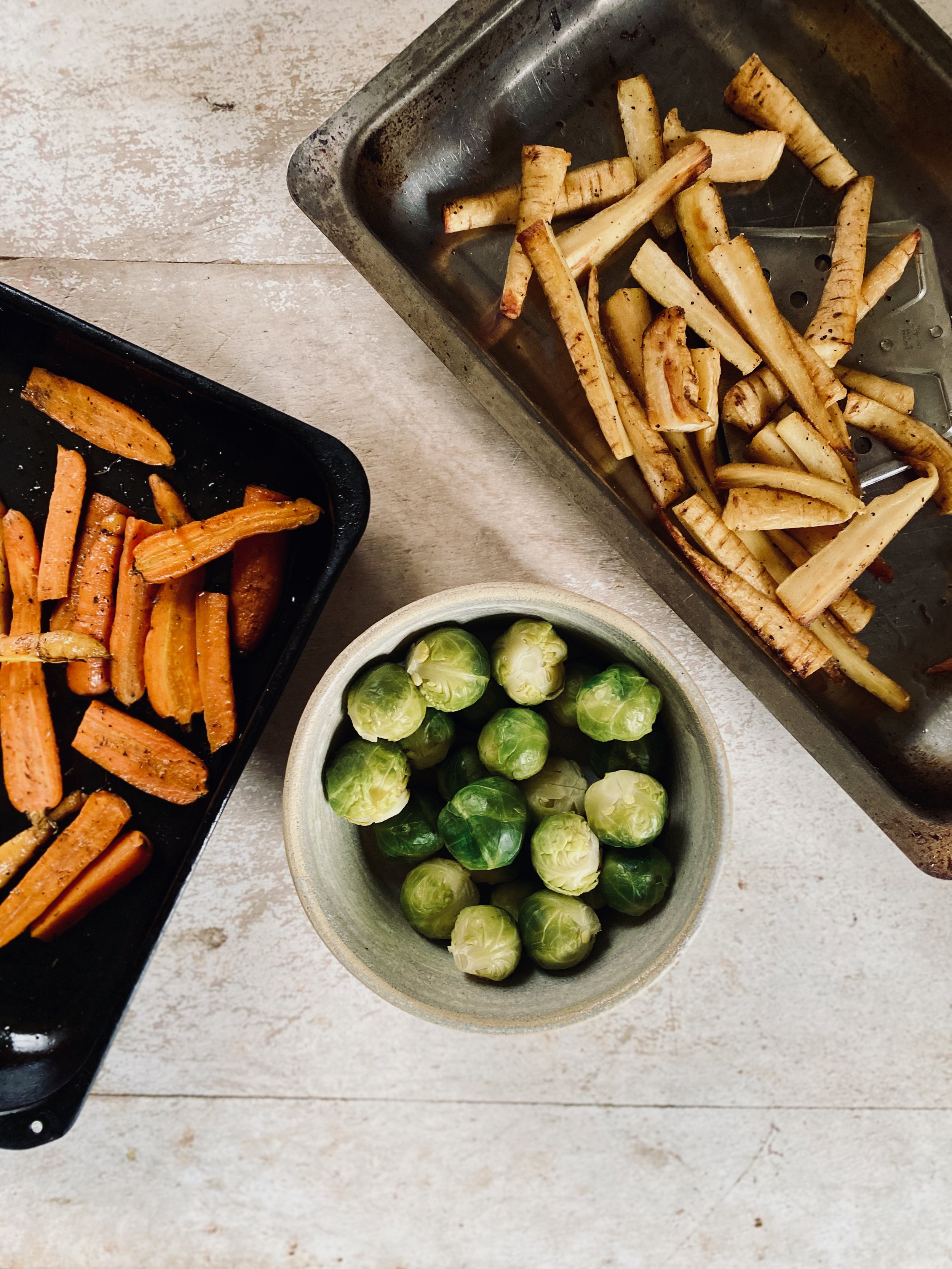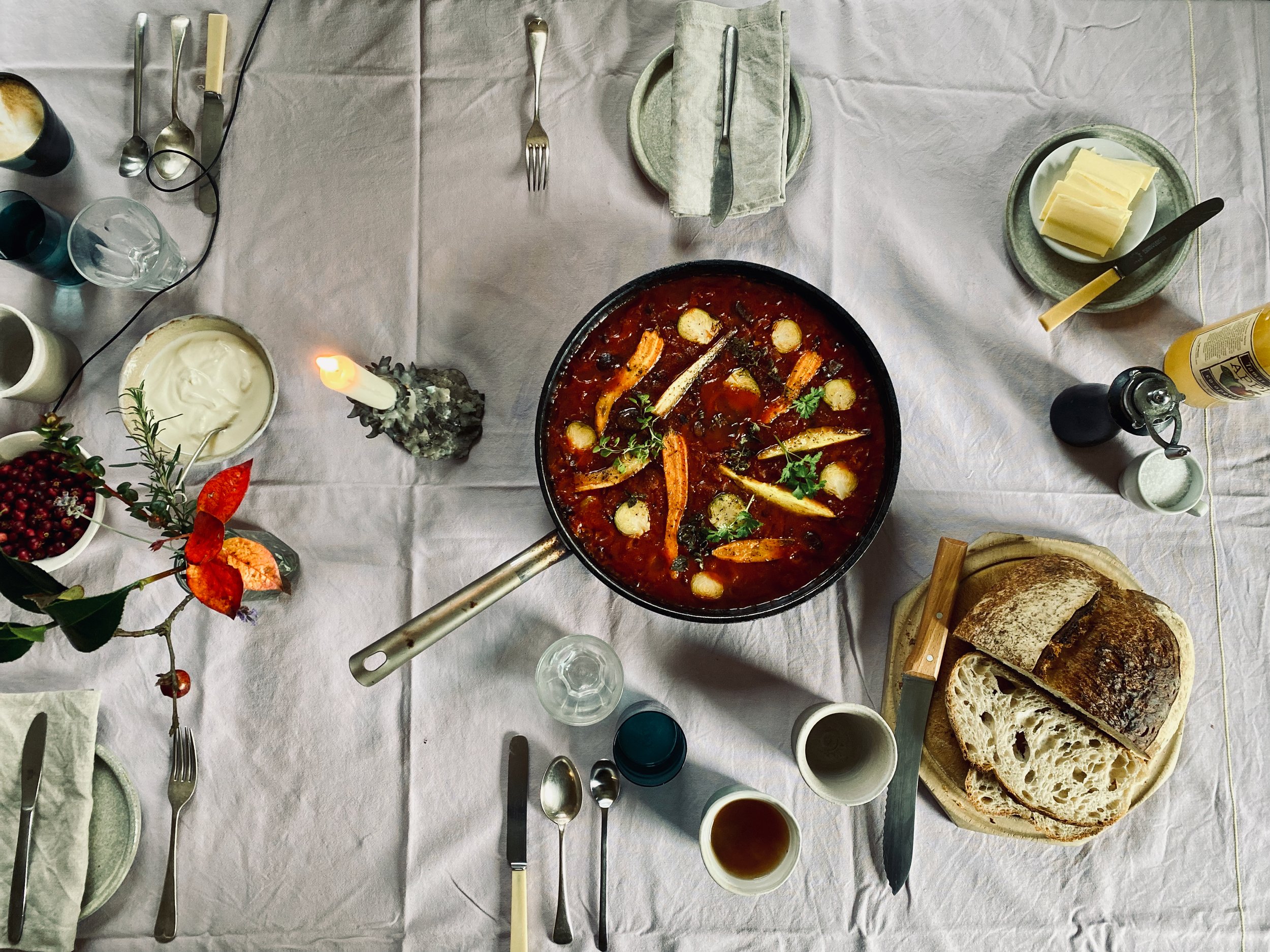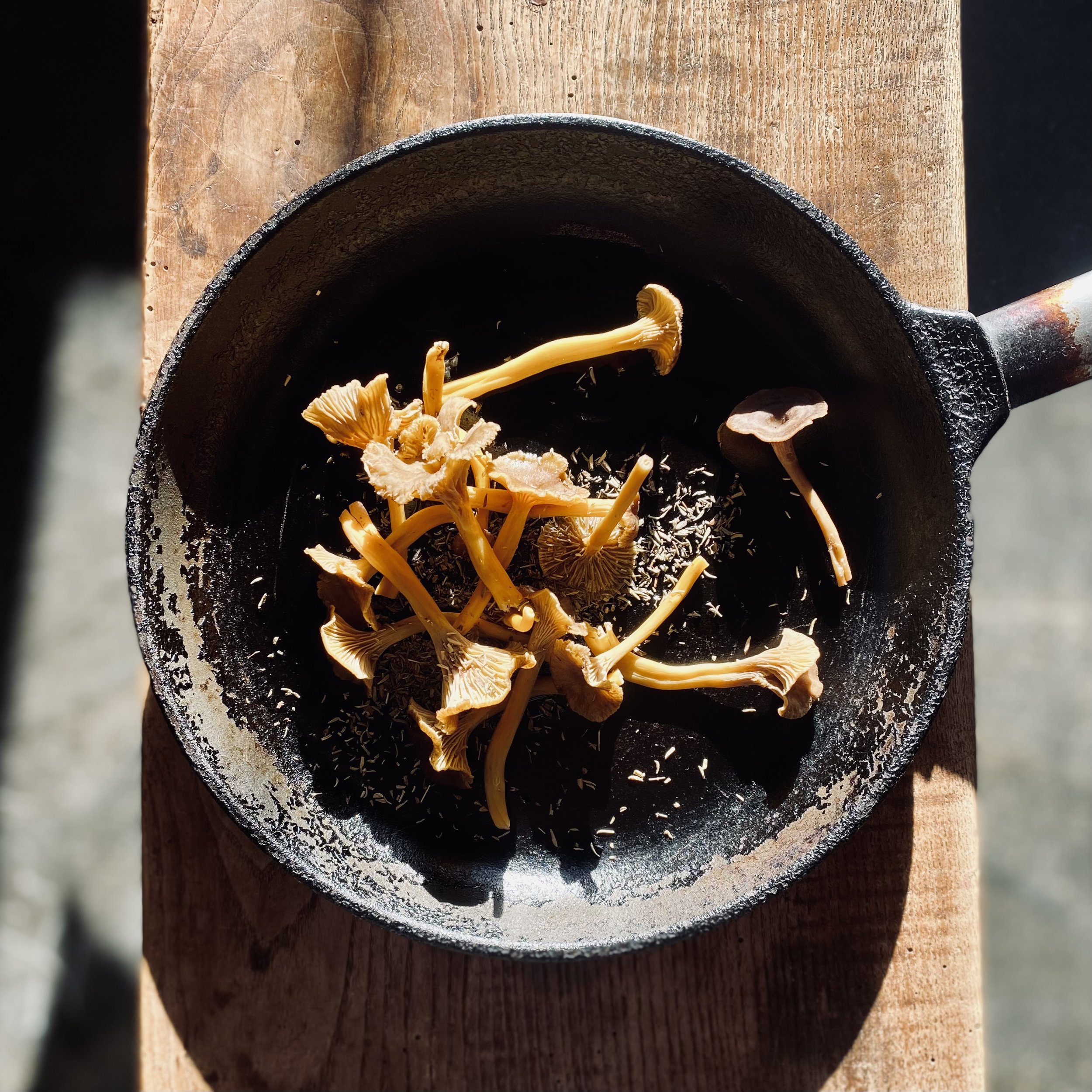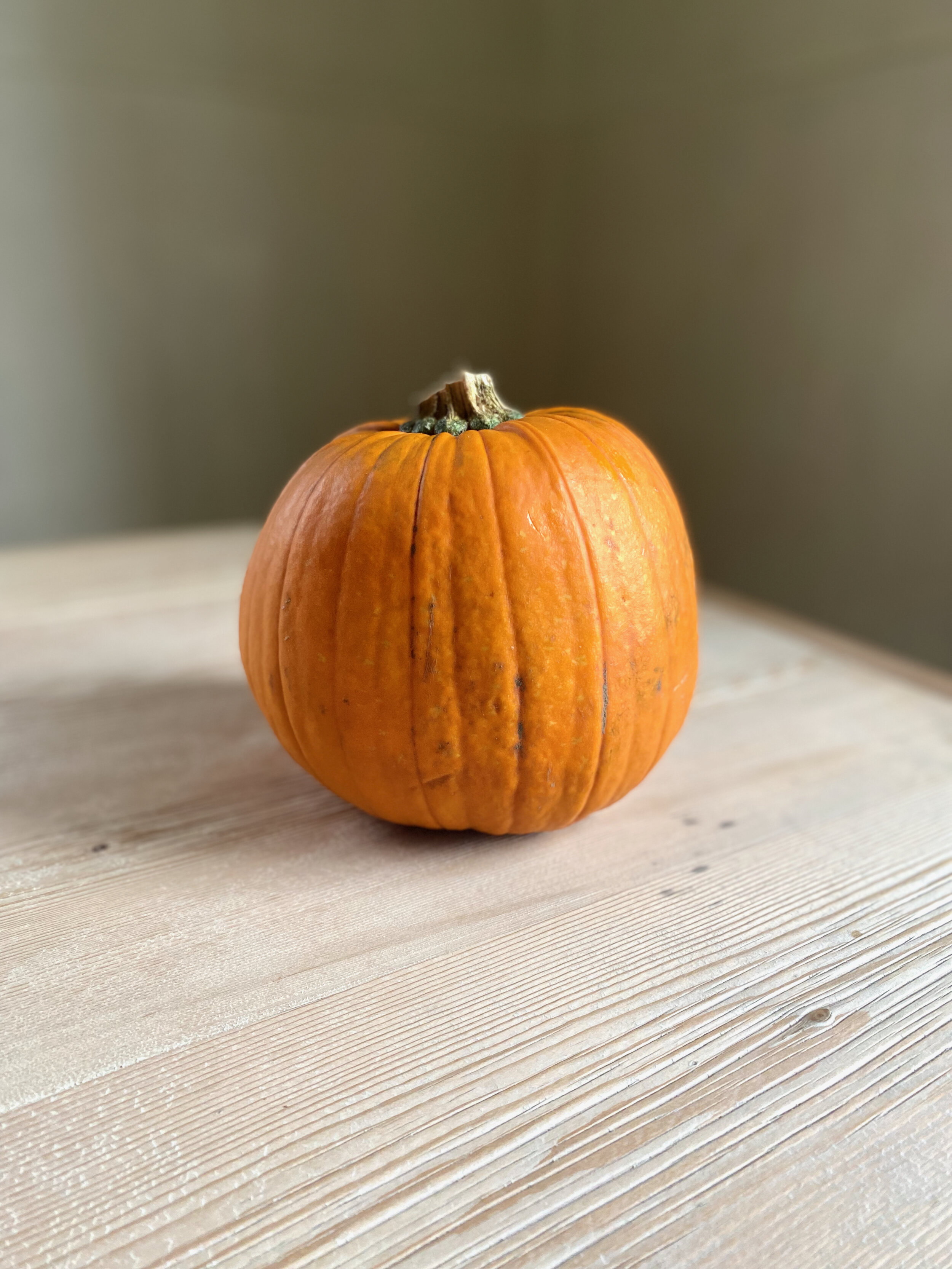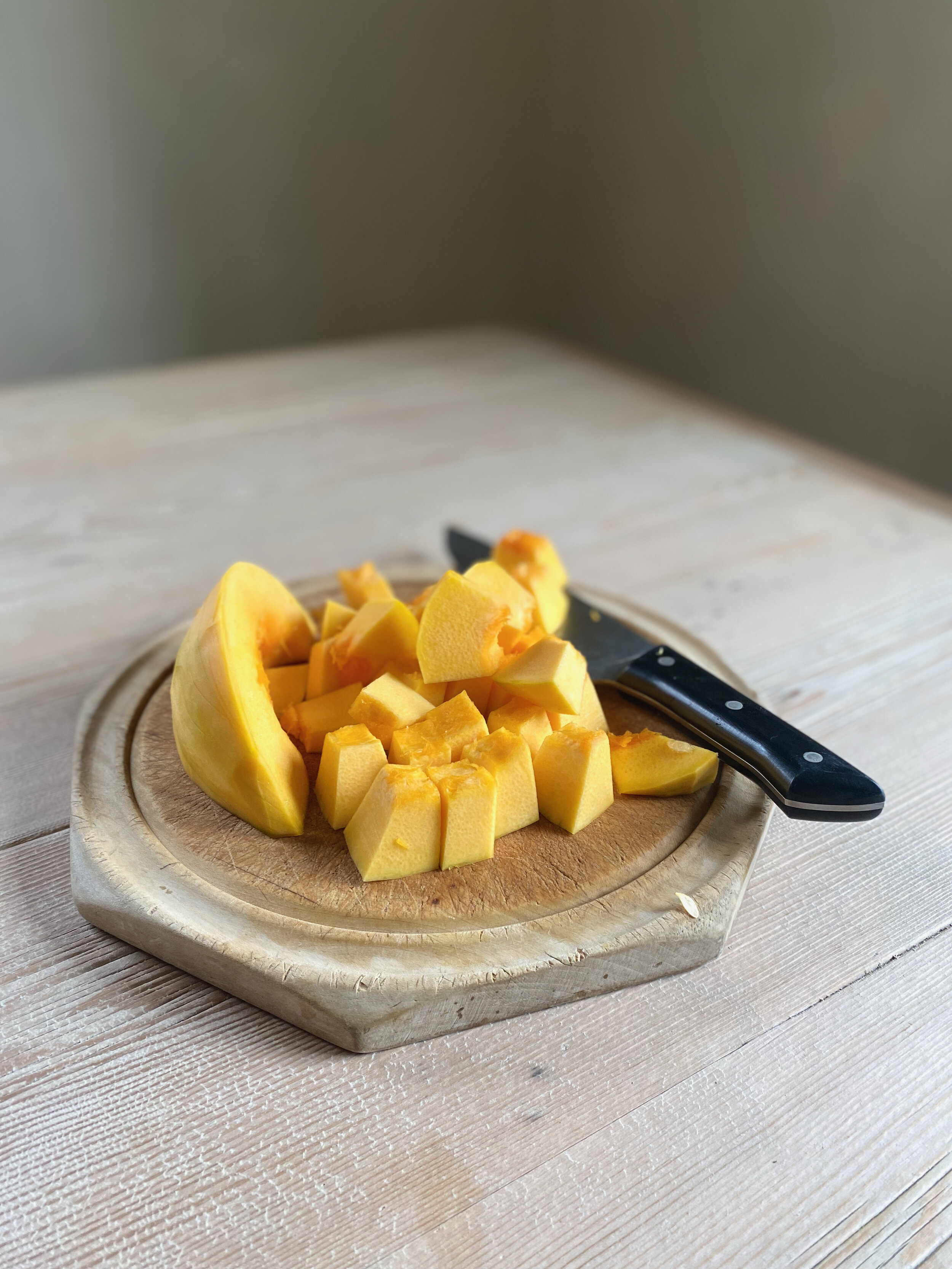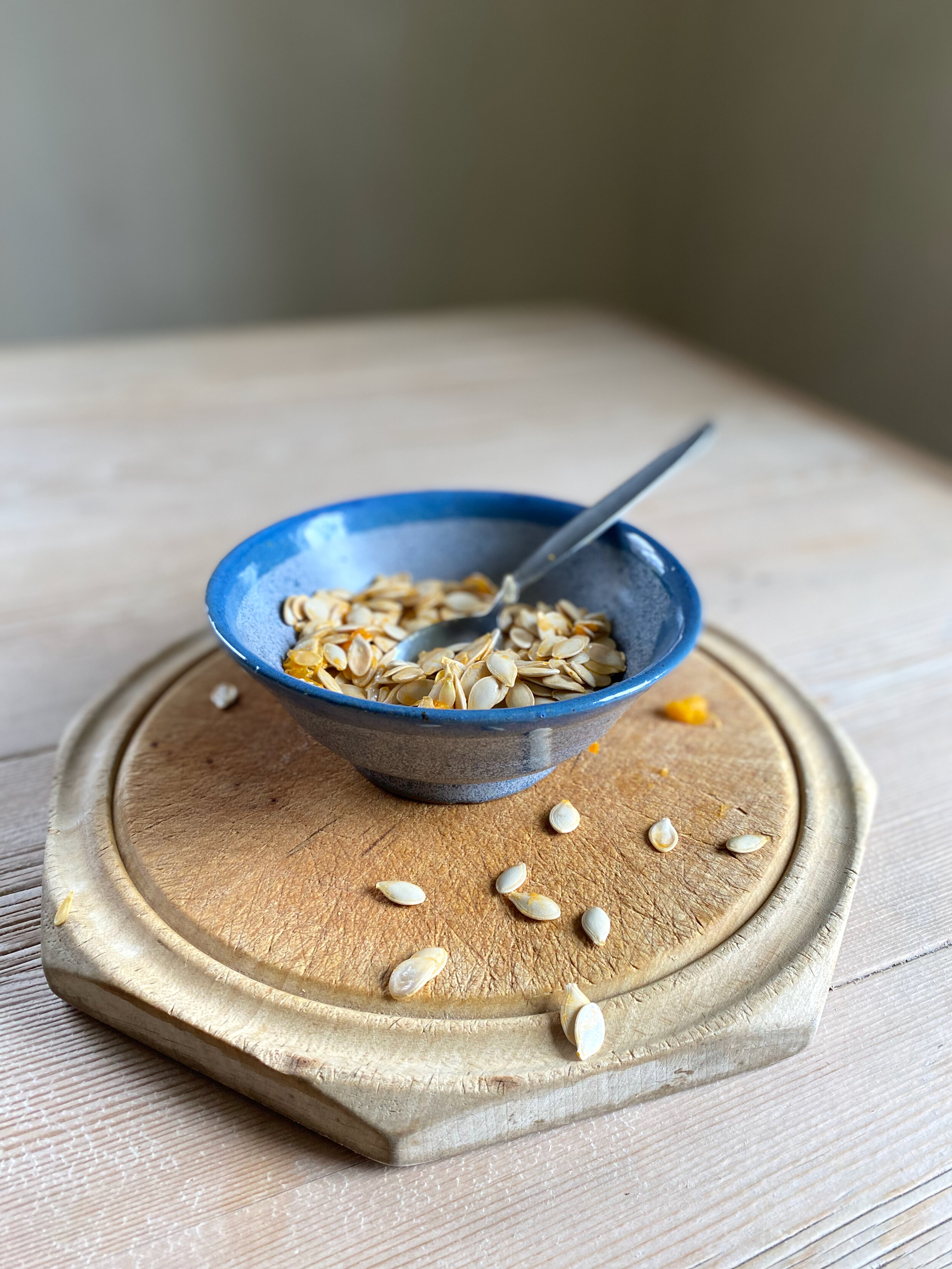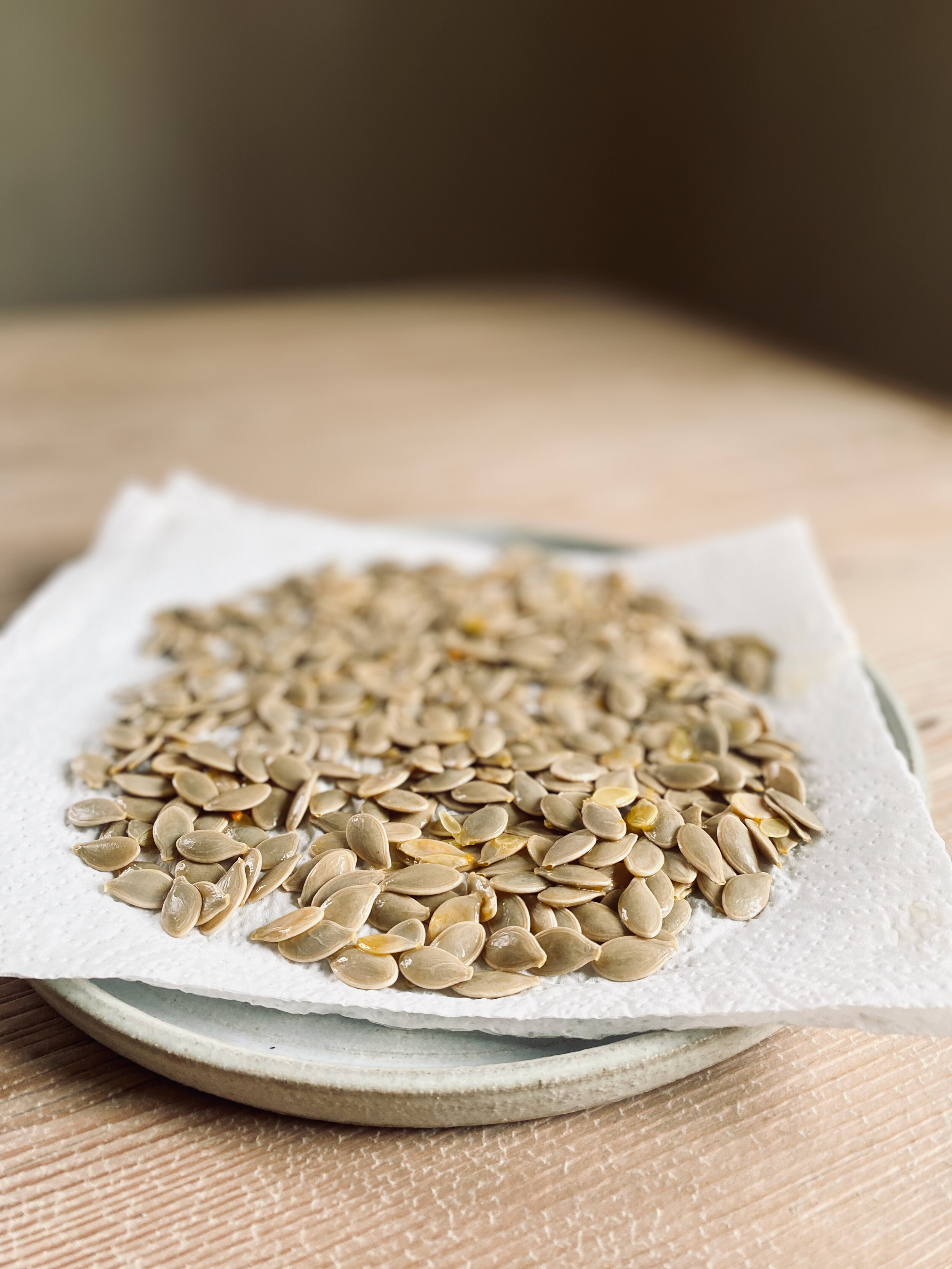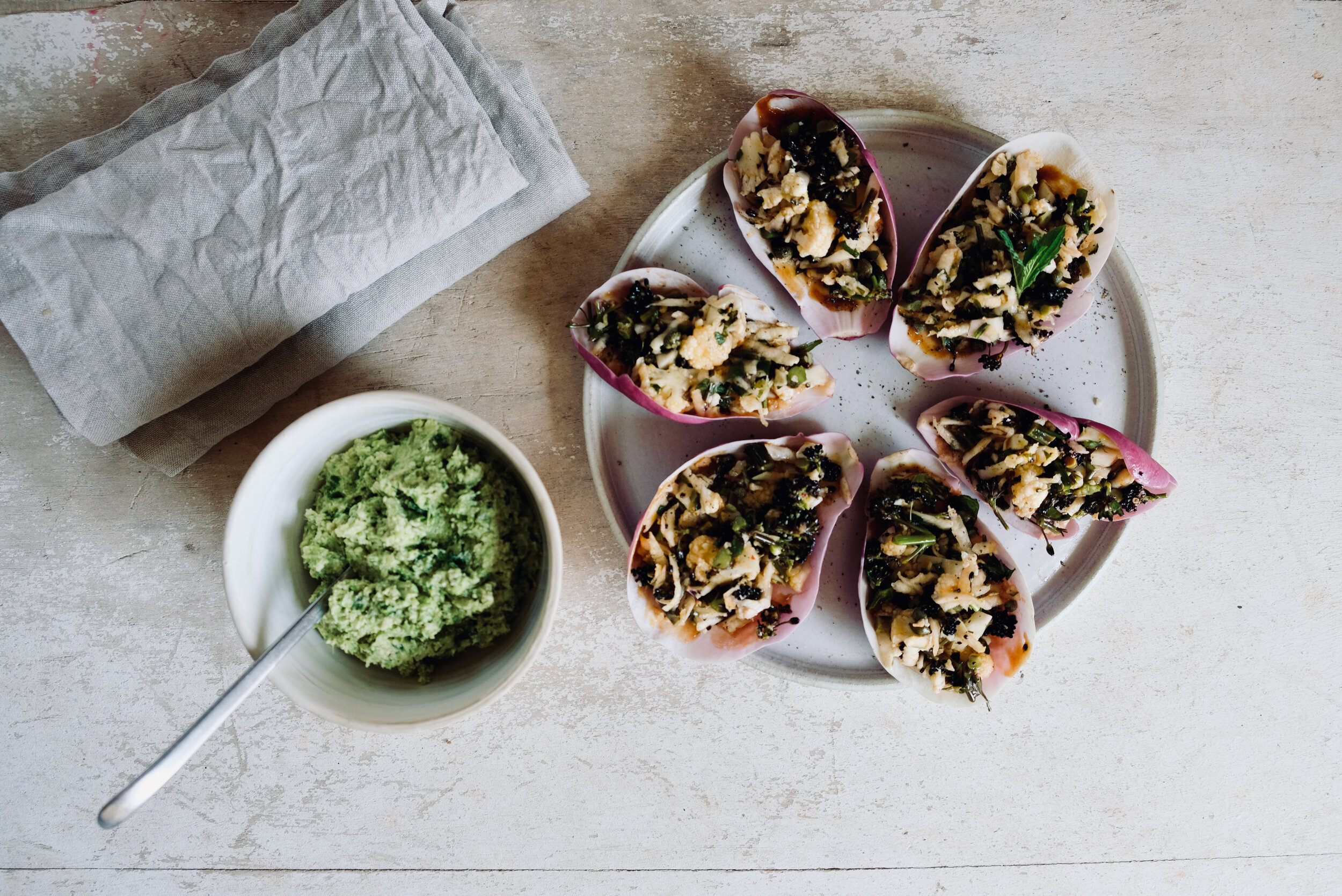I like to always have a pot or two of pickled veg on the go - such a tangy, tasty way to liven up most meals, and it’s such a handy option for using up leftover produce from our veg box or during peak growing season.
Recipes such as this are all about adaptation and using up what you have - in terms of the vegetables you include as well as the fresh and dried herbs and spices. So if you don’t have any of the herbs or spices on the list below don’t be put off, just use a swap-in. I always make a note of adaptations I make to recipes so I can figure out what worked well and not so well next time!
I added dried seaweed flakes from The Cornish Seaweed Company to this pot of pickled veg; I wanted to add a flavour of the coastline when I used the veg to accompany Wild Mushroom & Rock Samphire Omelettes during my beach-side breakfast conversation with seaweed artist Julia Bird.
You can listen to my conversation with Julia in Episode 17 of my podcast, Breakfast & Beyond. Enjoy!
Thank you to John Hersey for the photo below :)
Recipe: Seaweed Pickled Vegetables
Makes 1 x 1litre kilner jar
Ingredients:
400g seasonal veg - I used courgettes, carrots and beetroot
Handful of fresh, seasonal herbs - I used marjoram
250ml cider vinegar
200ml water
30g sea salt
1 tsp peppercorns
1 desert spoon dried seaweed flakes
1/2 tsp black mustard seeds
1/2 tsp fennel seeds
1/2 tsp fenugreek seeds
1/2 tsp ground ginger
1/2 tsp ground turmeric
Method:
Prepare a 1 litre glass jar for storing the pickled veg by washing thoroughly then drying.
Chop the veg into small pieces using all edible parts including stalks and leaves, then place in a large bowl. Chop the fresh herbs and mix with the veg.
Pack the vegetables and fresh herbs into the glass jar, pressing down so there is a gap at the top of the jar.
Make the brine - place the water, cider vinegar and salt in a pan and warm until salt is dissolved. Remove from heat then add the peppercorns, seaweed flakes, mustard, fennel and fenugreek seeds along with the ground ginger and turmeric. Stir well and leave to cool.
When cool, pour liquid over the vegetables, making sure there are no air gaps. Place the lid tightly on the jar.
Leave for at least 48 hours before using to let the flavours develop. Will keep for a couple of months in the fridge.
